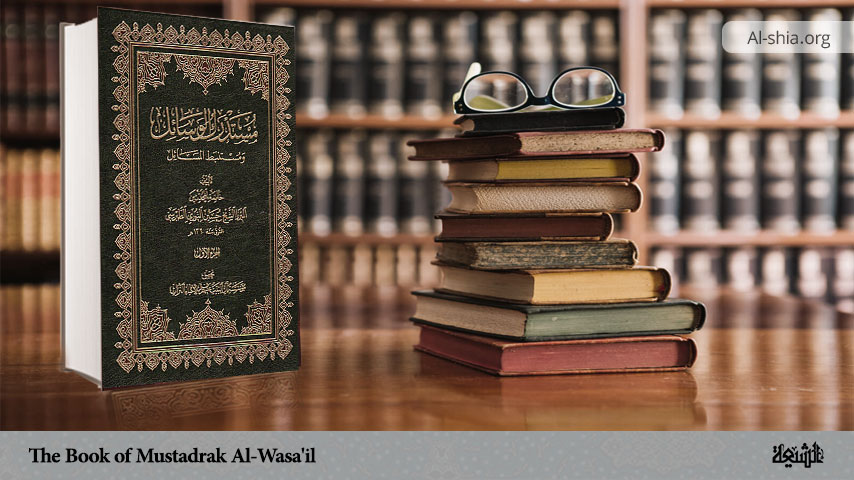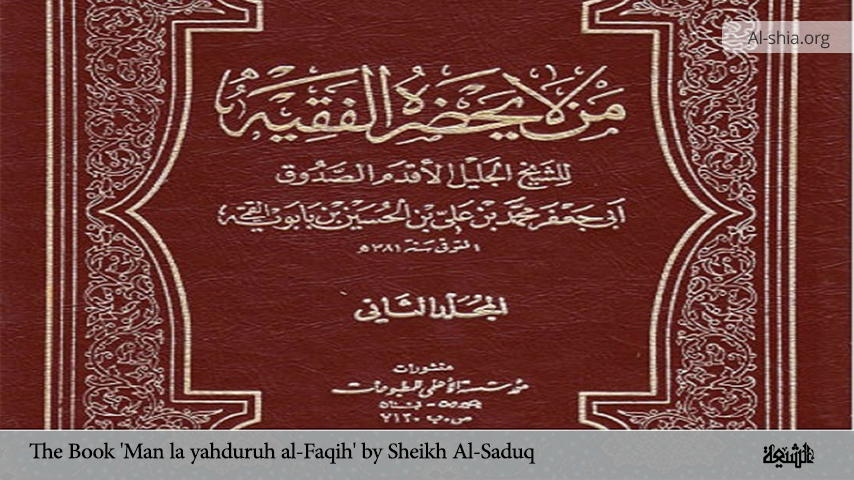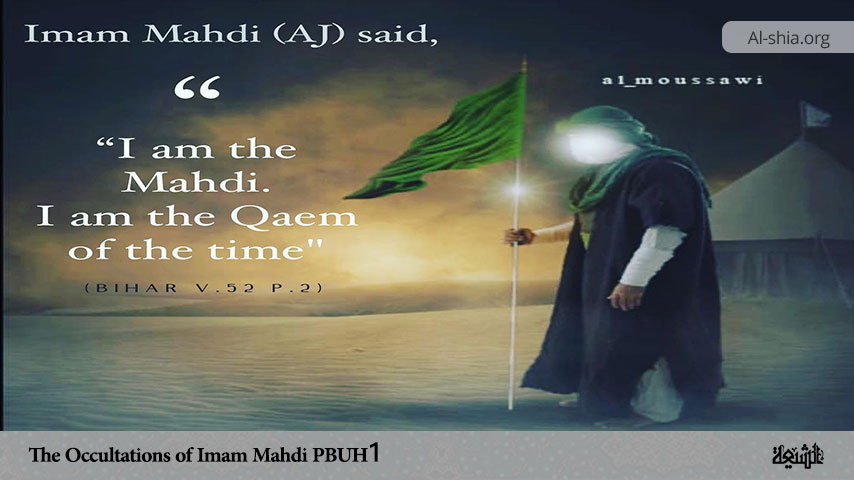Mustadrak al-wasāʾil wa mustanbaṭ al-masāʾil popular known as Mustadrak is a collection of hadiths regarding fiqh (jurisprudence), written by Mirza Husayn Nuri, known as Muhaddith Nuri, a Shiite scholar (d. 1320/1902).
The book is a supplementation (istidrak) of Wasa’il al-shi’a by al-Shaykh al-Hurr al-‘Amili. It counts as the most important work of Mirza Nuri.
In this book, Muhaddith Nuri collected over 23,000 hadiths that were not cited in Wasa’il al-shi’a. Mustadrak al-wasa’il counts as a reliable Shiite collection of hadiths written in the 14th/20th century. In order to derive the rulings of shari’a, a mujtahid refers to Wasa’il al-shi’a first, and then to Mustadrak in order to make sure that every hadith is taken into account.
Muhaddith Nuri made a thorough search in order to find reliable sources of hadiths that are not cited in al-Shaykh al-Hurr al-‘Amili’s Wasa’il al-shi’a. These sources include 75 Shiite hadith books the reliability of which are argued for by Muhaddith Nuri in the epilogue of Mustadrak.
The author collected many hadiths from reliable sources that were about to go into oblivion. Muhaddith Nuri revived and added those sources to reliable Shiite collections of hadiths.
Motivation for writing the book
Muhaddith Nuri chose the book, Wasa’il al-shi’a, for supplementation, because he believed that al-Hurr al-‘Amili provided the most comprehensive collection of hadiths regarding fiqh that should be consulted by all people who seek to derive rulings of shari’a from hadiths. The author classifies his “supplementation” to Wasa’il al-shi’a into three parts:
1. Hadiths that are cited in old and reliable books, but were not available to al-Shaykh al-Hurr al-‘Amili.
2. Hadiths that are cited in books whose authors were unknown to al-Hurr al-‘Amili and so were not cited by him, but Muhaddith Nuri could identify their authors with his research and show their reliability.
3. Some hadiths are cited in reliable books that were available to al-Hurr al-‘Amili but he just overlooked them.
In an illumination of his motivation for writing the book, Muhaddith Nuri said that supplementing the book, Wasa’il al-shi’a, is a worship.
Moreover, it is very helpful to collect hadiths regarding the rulings of fiqh and make them available to scholars. With this, the Prophet’s (s) shari’a will be more complete.
Style of writing
Muhaddith Nuri wrote the book in a similar style to Wasa’il al-shi’a. Titles of the sections of the book are the same as those in Wasa’il al-shi’a, and so the reader can easily find the relevant hadiths. And when his view about the titles of sections was different from that of the author of Wasa’il al-shi’a, he tried to keep it as similar as possible.
In case he did not find new hadiths in a section, he eliminated that section from his book. The book refers to al-Shaykh al-Hurr al-‘Amili as “Shaykh”, and refers to Wasa’il al-shi’a as “Asl” (origin).
At the end of most sections, there are important points about the issues of the section, such as rulings that can or cannot be derived from them, and other relevant issues. Sometimes a relevant hadith is not cited by al-Hurr al-‘Amili under a section, though it is cited elsewhere. In such cases, Muhaddith Nuri cites such hadiths under the relevant section as well.
Date of writing
Muhaddith Nuri started writing the book around 1295/1878 in Samarra near the holy shrine of Imam al-Hadi (a) and Imam al-Hasan al-‘Askari when Mirza Shirazi was in charge of the Isalmic seminaries.
The main part of the book was finished in 1313/1895, one year after the death of Mirza Shirazi, and its second part, that is its epilogue, was finished in 1319/1901 in Najaf on Rabi’ II 10/July 27, the birthday of Imam al-Hasan al-‘Askari (a).
Features
1. Some hadiths that are cited in Wasa’il al-shi’a with unreliable chains of narrations are cited in this book with reliable chains.
2. Some hadiths that count in Wasa’il al-shi’a as infrequent proved to be frequent in this book.
3. Some al-mursal hadiths (that is, ones with incomplete chains of narrations) in Wasa’il al-shi’a are cited with complete chains of narrations in this book.
4. Some al-mawquf hadiths (that is, ones that are not attributed to the Infallibles (a)) are cited with chains of narrations that attribute them to the Infallibles (a).
5. The implications of some ambiguous hadiths are made clear.
6. Nuri cited hadiths with regard to some rulings for which no hadith was cited in Wasa’il al-shi’a.
Epilogue of the book
The epilogue of Mustadrak contains an essay by Muhaddith Nuri that, according to Aqa Buzurg Tihrani, is a precious work in dirayat al-hadith and principles of ‘ilm al-rijal. The 12 issues discussed in this epilogue are as follows:
1. Sources of the book,
2. Introducing and showing the reliability of the authors of these sources,
3. Muhaddith Nuri’s chain of narrations of these sources,
4. A description of al-Kafi by al-Kulayni,
5. An exposition of the narrators of Man la yahduruh al-faqih by al-Shaykh al-Saduq,
6. Some points about Tahdhib al-ahkam by al-Shaykh al-Tusi,
7. People of Consensus and their numbers,
8. Reliability of Imam al-Sadiq (a)’s companions,
9. Terms that imply reliability, and in gerenal, evidence for reliability,
10. Reliable hadiths that are not mentioned in the epilogue of Wasa’il al-shi’a,
11. Akhbari views about the reliability of certainty,
12. The place and value of the science of hadith.
Manuscripts
A manuscript with the handwriting of the author in the library of Astan Quds Razavi, Mashhad. At the end of this manuscript, there is a hadnwriting of Aqa Buzurg Tihrani confirming the authenticity of the manuscript.
1. A manuscript in the library of Sayyid ‘Abd al-‘Aziz Tabataba’i. This manuscript also contains Aqa Buzurg Tihrani’s commentaries on Mustadrak al-wasa’il.
2. A manuscript in the Nasiri library in Tehran.
Publication
The book was published in 18 volumes in Arabic by Mu’assisa Al al-Bayt li Ihya’ al-Turath in Qom in 1408/1987.
References
The material for this article is mainly taken from Mustadrak al-Wasa’il in WikiShia.
Source: https://en.wikishia.net/view/Mustadrak_al-wasa%27il_(book)

















